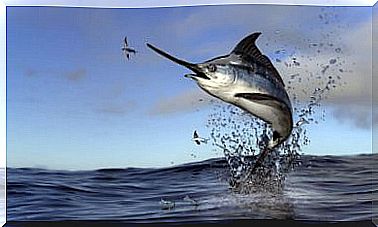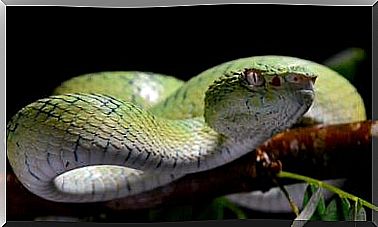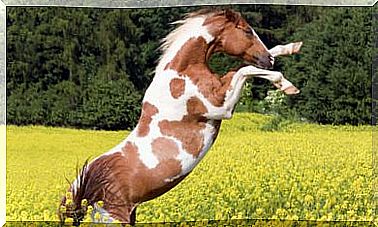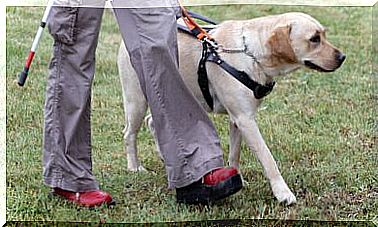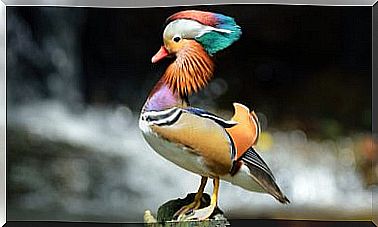Snow Leopard: Characteristics, Behavior And Habitat
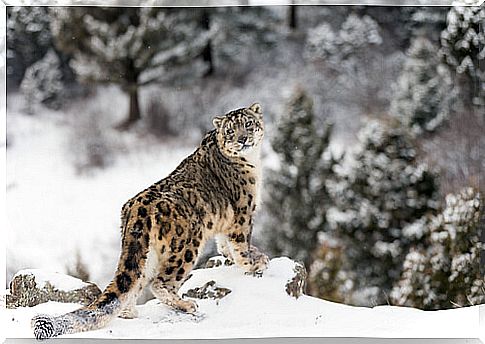
The snow leopard or Panthera uncia, also known as irbis , is one of the most important predators in the mountain ranges of Central Asia. Fearful and admired by Tibetan cultures and their shepherds, this emblematic carnivore can live at an altitude of 6,000 meters.
Precisely the inhospitable and remoteness of its habitat, together with its shyness and fur, make this feline one of the most unknown large carnivores on our planet.
Characteristics of the snow leopard
Although it is smaller in size than other large predators, it can reach 75 kilograms, although the most normal is that they weigh between 30 and 60 kilos. They have a sturdier and shorter body than that of other felines, despite the fact that they have one of the longest tails of all feline species.
Its coat is thick and of different degrees of gray, with black spots in rosettes, white breast and yellowish or brown color degradations in some parts of the body. Their eyes are pale green or gray, something rare among big cats.
The snow leopard must be adapted to live in the cold and has several adaptations, including its already mentioned compact body covered by a thick layer of hair. But, in addition, it has relatively small and hairy ears, and wide claws that act like snowshoes, similar to those of the polar bear.
Its tail is one of its main adaptations, not only to the cold, but also to its rocky habitat. And it is actually fat and covered with hair, which allows you to use it as a scarf at night.
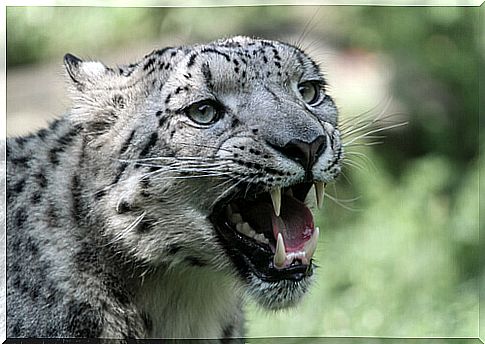
The snow leopard has a very long nasal cavity, which allows it to warm the cold Himalayan air. One of its curiosities is that it cannot roar, because although its hyoid is similar to that of the so-called big cats, it does not have other morphological adaptations in the larynx.
Snow leopard behavior
Like other felines, they are solitary animals that only meet for copulation and for the coexistence between mothers and young during the first months of life. Normally, each specimen has its territory, which can reach 200 square kilometers, since it depends on the volume of prey in that space.
The snow leopard makes marking by urine or by rubbing against the rock, a way of communicating and indicating its territory and routes. They are twilight felines, which are active during dusk and dawn.
Regarding their hunting habits, they can be scavengers, but they are good hunters and can kill prey that is four times their weight, such as horses or camels. Its most common prey are species of wild goats, such as the baral, the Himalayan tar, the marjor or the argali.
Sometimes the snow leopard attacks the livestock of traditional herders in Nepal and elsewhere ; There is a conflict similar to that which occurs in Europe with cattle ranchers and wolves, which is remedied by conservation entities and governments to prevent the extinction of this species.
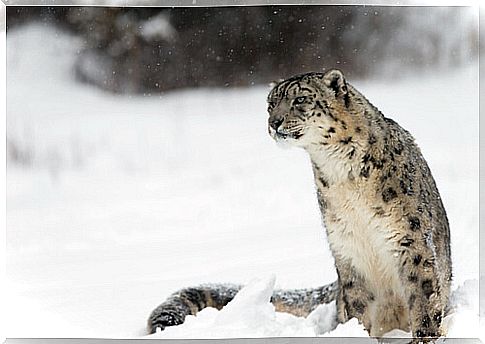
Snow leopard habitat
The snow leopard is found in mountainous areas of Siberia, Russia, Pakistan, Mongolia, Tibet, India, Nepal, or Uzbekistan. In these areas it lives from 2,000 to 6,000 meters high, on mountain slopes and snow-capped peaks.
Although its distribution is relatively wide, and has recently been declared to be less threatened, the fact is that the last 4,000 to 9,000 snow leopards are in danger from poaching and climate change.
Despite this, the inhabitants of the mountainous domains of this emblematic animal are reluctant to lose it; The snow leopard is part of the culture of all the countries where it lives and has become a symbol of many heraldic elements.
And it is that these people are aware of an overwhelming reality: if the snow leopard disappears, much of the culture of the last peoples of the Asian mountains disappears. We hope, therefore, that this beautiful feline is still alive.
